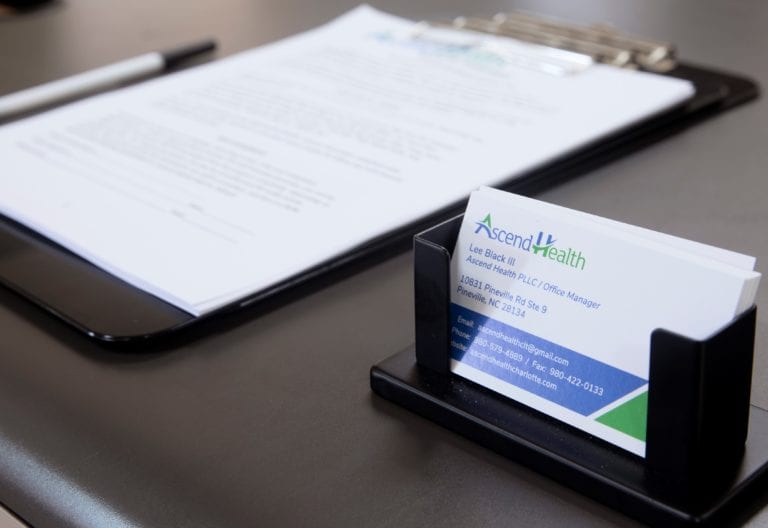You’ve worked hard to complete detox or inpatient rehab, and now you’re ready to build on that foundation. Integrating an outpatient MAT with family therapy approach can provide the comprehensive care and support necessary for lasting recovery. In this article, you’ll learn how medication-assisted treatment (MAT) combined with structured family involvement empowers you to manage cravings, strengthen relationships, and stay on track long term.
Define outpatient MAT
Medication-assisted treatment pairs FDA-approved medications with counseling and behavioral therapies to address physical cravings and underlying triggers. Outpatient MAT lets you receive this “whole-patient” care without leaving home, work, or school. You’ll visit a clinic or use telehealth for regular check-ins while taking medications like buprenorphine (Suboxone), methadone, or naltrexone to stabilize brain chemistry and reduce withdrawal symptoms [1].
Key benefits of outpatient MAT include:
- Reduced overdose risk and cravings
- Improved treatment retention and social functioning
- Flexibility to maintain daily responsibilities
- Integration of therapy, education, and medical monitoring [2]
If you choose a dedicated suboxone maintenance therapy outpatient program, you’ll follow an individualized plan that balances medication dosing with counseling sessions. This combination addresses both the physical and psychological aspects of opioid use disorder, setting you up for a smoother transition into aftercare.
Incorporate family therapy
Family therapy is a crucial element in outpatient MAT aftercare, offering a structured setting where you and your loved ones learn to communicate, set boundaries, and rebuild trust. By involving those closest to you, therapy sessions can:
- Clarify roles and expectations across the family system
- Teach coping strategies for relapse triggers
- Offer education on opioid addiction and recovery dynamics
- Foster accountability and emotional support [3]
When you enroll in an aftercare suboxone treatment program, you’ll often attend joint sessions alongside individual counseling. This dual approach ensures that everyone gains the tools needed for healthy interaction and long-term sobriety. Additionally, learning about relapse prevention together builds a shared commitment to your recovery.
Choose medication options
Compare FDA-approved medications
Your MAT plan may include one of several medications. Understanding their profiles helps you and your provider select the best fit:
| Medication | Administration | Key benefits |
|---|---|---|
| Buprenorphine | Daily sublingual dose | Reduces cravings and withdrawal symptoms |
| Methadone | Daily clinic visit | Stable opioid receptor activation |
| Naltrexone | Monthly injection | Blocks euphoric effects, supports abstinence |
| Sublocade | Monthly injection | Extended-release buprenorphine for consistency |
Each option has unique considerations—buprenorphine allows take-home dosing, while methadone may require daily clinic visits. If you need predictable coverage, explore sublocade treatment with insurance coverage.
Evaluate administration methods
Your lifestyle and support system will shape how you receive medication:
- Clinic-based dosing (methadone) offers structured oversight
- Take-home scripts (buprenorphine/Suboxone) grant flexibility
- Monthly injections (Sublocade or Vivitrol) reduce daily adherence pressures [4]
Discuss with your provider whether an outpatient buprenorphine treatment program or an outpatient opioid rehab with suboxone best aligns with your goals.
Strengthen your support
Leverage family networks
Beyond formal therapy, your family can be a daily source of encouragement. Share recovery goals, agree on relapse warning signs, and schedule regular check-ins. Their involvement not only boosts your accountability but also helps them understand how to support you effectively.
Use peer support groups
Connecting with others in recovery adds another layer of camaraderie. Whether you join a local Veteran’s group through a veteran opioid treatment program or attend community meetings, those who’ve walked a similar path can offer insights, empathy, and practical advice.
Attend counseling sessions
Individual and group counseling remain central to your plan. Your therapist will guide you through triggers, teach coping mechanisms, and help you process emotions. Combining peer support with professional guidance ensures you’re never navigating recovery in isolation.
Implement relapse prevention
Develop coping strategies
Effective relapse prevention relies on skills you can practice daily:
- Identifying high-risk situations and planning alternatives
- Practicing stress-reduction techniques like deep breathing or mindfulness
- Journaling to track triggers, moods, and achievements
- Engaging in healthy activities such as exercise or creative outlets
Use telehealth resources
For added convenience, telehealth platforms let you access counseling and check-ins from home. A telehealth relapse prevention mat service can deliver therapy, peer support, and medication management without geographic constraints.
Monitor your progress
Regular assessments—through self-report, family feedback, and provider check-ins—help you and your care team adjust your plan. Tracking metrics like therapy attendance, medication adherence, and coping skill use keeps you focused on continuous improvement.
Navigate aftercare continuum
At Ascend Health, our aftercare continuum guides you from early recovery through long-term maintenance. You’ll transition smoothly from inpatient to outpatient care, tapping into:
- Suboxone maintenance and telehealth suboxone maintenance program options
- Family therapy sessions that strengthen your support system
- Relapse prevention tracks, including mat aftercare and relapse prevention and group workshops
- Peer recovery coaching and educational modules
- Ongoing connection to suboxone clinic for long-term recovery
This structured progression ensures you have access to individualized plans at every stage.
Access insurance coverage
Most major insurers now cover elements of outpatient MAT, from medication to therapy. To maximize your benefits:
- Verify your plan’s coverage for Suboxone, methadone, or injections
- Ask about in-network providers and any prior-authorization requirements
- Check if your policy includes family therapy or counseling services
- Explore programs like insurance covered outpatient recovery program or outpatient opioid recovery program covered by insurance
- Inquire about sliding-scale fees or Medicaid acceptance through an outpatient opioid program that takes medicaid
By understanding your benefits, you can focus on recovery rather than treatment costs.
Ultimately, combining outpatient MAT with family therapy gives you a balanced, supportive framework for relapse prevention and long-term wellness. You don’t have to navigate this journey alone—reach out today to learn how our aftercare continuum can empower your recovery path.



